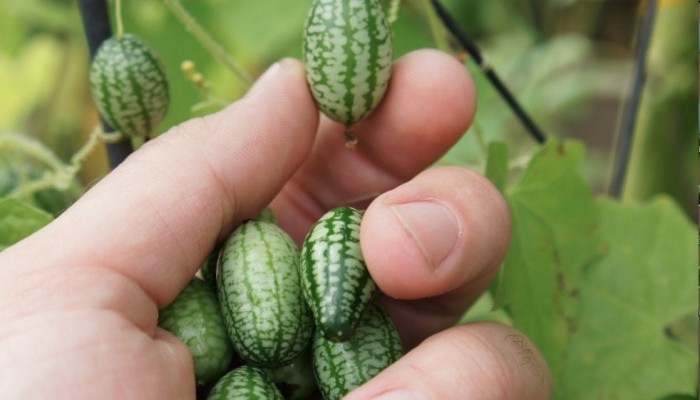Cucamelons are definitely cool stuff to grow this season. Try something completely new this time and surprise your fellow growers.
What are cucamelons?
Cucamelons are grape-sized cukes. These doll house-sized watermelons taste of pure cucumber with a tinge of lime. Isn’t this fantastic combination? These little egg-shaped fruits are actually one of the cutest foods known to man! They are also one of those ‘oh-so-easy’ plants to grow even for real novices in the job.
Now, allow me to show you how to get started…
Cucamelons are grown in almost the same way as regular cucumbers are, only they are far easier to grow. Unlike cucumbers, they do not need the protective cover of a greenhouse, sophisticated pruning techniques or other training techniques. Most important, they do not suffer from many pests, so they are not loaded with pesticide residue.
Here’s how to grow these cute little cucamelons:
1. Sow the seeds from April to May indoors.
2. Plant out when all risk of frost is put aside.
3. Provide them with a good support to scramble over, keep them well-watered, and that is pretty much all you will need to do for them!
4. Harvest them when they reach the size of a grape, but are still nice and firm on touch.
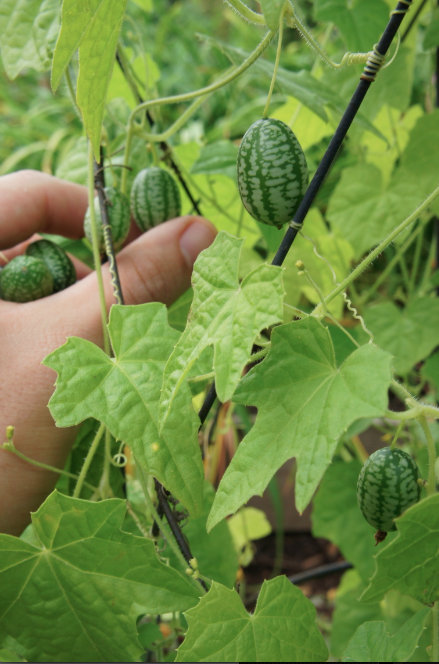
They make awesome, high-yielding vines that can be planted really close together to get the most and best out of a small planting space. All they need is as little as 15cm (6 inches) between plants around a trellis.
Eating Cucamelons…
This is of course the easiest part of the job. The fruit can be eaten straight off the plant, or mixed with some seasonal veggies such as olives, slices of pepper and a dousing of olive oil.
You will agree that they look perfect for an original snack with drinks, or they can be even popped like an olive in a “cheeky martini.” You can also pickle cucamelons with some mint and dill.
To preserve cucamelons’ virtues throughout the cold winter season, you can make cucamelon dill pickles. Take my word for it: they are fantastic and so much refreshing in a simple ham sandwich or with a fancy cheeseboard!
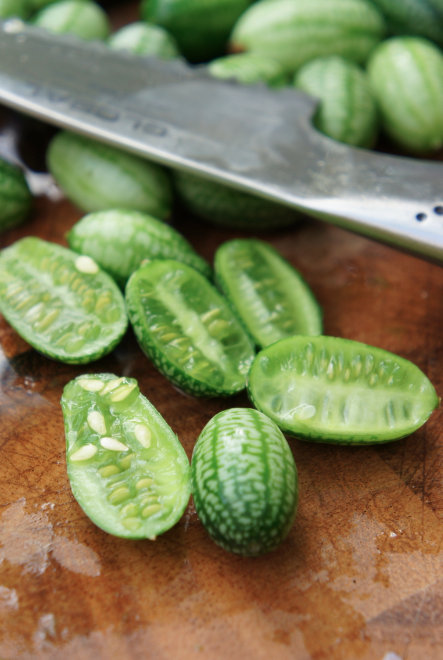
How to pickle cucamelons…
They are usually pickled whole, but slicing these little fruits in halves and pre-salting them will result in a far crispier product – not to mention the fact that they will be ready to eat in half the time.
Pre-salting them means simply sprinkling the sliced fruits with a really generous amount of any sea salt (or Epsom Salts) in a colander (the ratio is about 1 tbsp. of sea salt per 1 cup of cucamelons). Then you set them to a bowl for 20 minutes or so.
This will draw out the excess of water from the fruit, which prevents the fruit from diluting the vinegar during the pickling process. After the 20 minutes are up, give them a good rinse, pat them dry with some paper towels, and they are all set!
Flavoring the pickling vinegar…
You can flavor the vinegar for pickling with any herbs you like. My favorite mix combines mint, dill, pickling spice and a sprinkling of pink peppercorns. I also add a generous sprinkling of sugar and salt and stir the mix to unite.
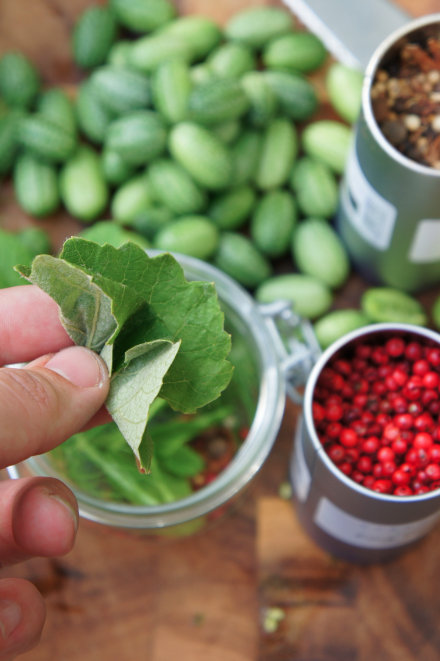
Adding a scrunched up vine or oak leaf is optional, but if you do it, it will further ensure a crispy result, as the tannins in the leaves will inhibit the natural enzymes within the fruit that can cause softness instead of firmness.
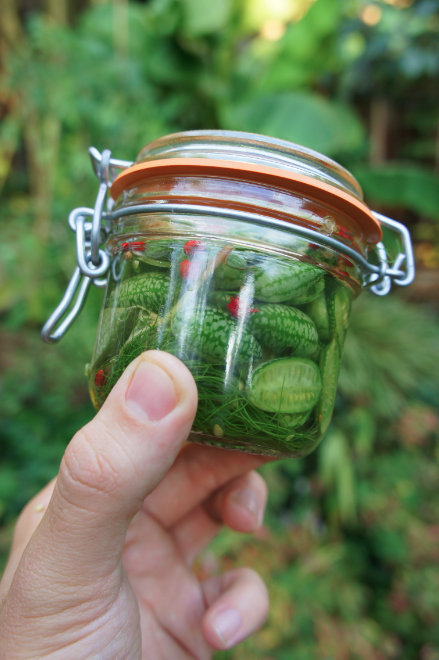
Finally, you top it up with a good-quality vinegar (like apple cider vinegar) to entirely cover the fruit, seal the jar with an air-tight lid, and give it a good shake to even the mixture. Place the jar in your fridge and they will be ready in just a week. I do believe you will become addicted once you try them out (Via HealthyMindMagazine)!
If you like this idea, be sure to share it with your friends and inspire someone you know. Anything becomes possible with just a little inspiration…
